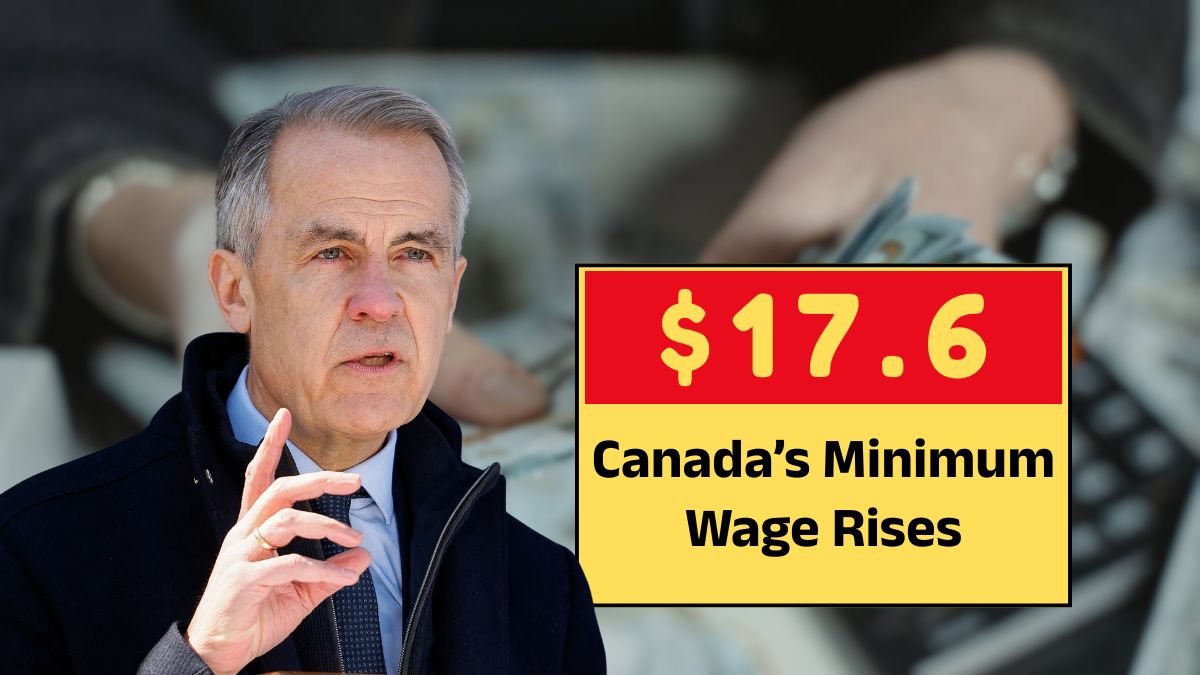Responding to the soaring pressures of inflation and the daily cost-of-living crisis, several Canadian provinces are moving ahead with minimum wage increases, with some jurisdictions raising hourly pay as high as $17.65 in 2025.
These wage adjustments aim to ensure that workers are not merely surviving but earning a livable wage that supports financial stability, dignity, and hope for the future. For provinces like Ontario and Alberta, the climb toward $17.65 per hour represents a pivotal step in adjusting labor market standards to today’s economic realities.
A Nationwide Effort to Support Workers
Canada’s wage adjustments reflect a broader recognition by provincial governments that low-income workers need stronger support during an era of high grocery bills, rent hikes, and healthcare costs. The focus is clear: deliver relief quickly to households where every additional dollar makes a critical difference.
While not all provinces are increasing their rates at the same pace, the $17.65 target is emerging as a benchmark across Canada’s labor market.
Provincial Minimum Wage Increases in 2025
| Province | New Minimum Wage | Effective Date |
|---|---|---|
| Ontario | $17.65 | October 2025 |
| Alberta | $17.65 | October 2025 |
| British Columbia | $17.85 | June 2025 |
| Saskatchewan | $15.50 | April 2025 |
| Manitoba | $16.00 | April 2025 |
| Quebec | $16.00 | May 2025 |
| Nova Scotia | $16.50 | April 2025 |
Ontario and Alberta Align With the $17.65 Benchmark
Two of Canada’s largest provinces—Ontario and Alberta—are moving in step to reach the $17.65 minimum wage.
- Ontario: The minimum wage increases from $17.60 to $17.65/hour starting October 2025.
- Alberta: The province also raises its wage from $17.50 to $17.65/hour in October 2025.
For millions of workers in these provinces, this adjustment means slightly more security in meeting basic costs such as food, rent, and transportation.
British Columbia Surpasses the Standard
British Columbia continues to lead the way with the highest provincial minimum wage in Canada. As of June 2025, the minimum wage in BC stands at $17.85 per hour.
This rate reflects the unique pressures of urban living, particularly in regions like Vancouver where housing and daily expenses are significantly higher than the national average.
Provinces Lagging Behind the National Target
Not all provinces have reached the $17.65 mark.
- Saskatchewan: $15.50/hour effective April 2025, still one of the lowest rates nationwide.
- Manitoba: $16.00/hour as of April 2025, an improvement but still below the $17.65 standard.
- Quebec: $16.00/hour starting May 2025, reflecting gradual wage growth.
- Nova Scotia: $16.50/hour in April 2025, inching closer but not yet at par with leading provinces.
These lower rates mean many workers in these provinces may still struggle to keep up with inflation.
Federal Minimum Wage and Its Impact
At the national level, the federal minimum wage—which applies to employees in federally regulated industries such as banking, telecommunications, and air transport—has been set at $17.75/hour in 2025.
This rate acts as a guideline and benchmark for provinces, even though individual jurisdictions maintain control over their own minimum wage laws.
What the Wage Increase Means for Workers
For workers in Ontario and Alberta, reaching $17.65/hour is a much-needed step in easing financial stress. The adjustment is expected to:
- Improve purchasing power for essentials like groceries and rent.
- Reduce household financial strain, especially for full-time minimum wage earners.
- Provide better stability for families struggling under rising healthcare and childcare costs.
However, workers in provinces that remain below the benchmark continue to call for stronger wage hikes, arguing that anything under $17.65/hour falls short of being a true living wage.
Broader Economic Implications
Economists note that higher wages can have both positive and challenging effects:
- Positive: Increased consumer spending, improved quality of life, and reduced reliance on government support programs.
- Challenges: Potential strain on small businesses facing higher payroll costs, which could influence hiring decisions or consumer prices.
Despite debates, the wage hike reflects Canada’s commitment to fairness in its labor market.
Calls for Further Adjustments
With inflation expected to remain a concern through 2025 and beyond, advocacy groups and unions argue that the minimum wage must remain dynamic and keep pace with real living costs.
Some are calling for provinces like Saskatchewan and Manitoba to fast-track wage increases, while others urge the federal government to consider nationwide standards to reduce disparities between provinces.
FAQs on Canada’s Minimum Wage Increase 2025
Q1: Which provinces will have a $17.65 minimum wage in 2025?
A1: Ontario and Alberta will reach $17.65 in October 2025, while BC surpasses it at $17.85.
Q2: What is the highest minimum wage in Canada in 2025?
A2: British Columbia has the highest at $17.85/hour.
Q3: Does the federal minimum wage apply to all Canadian workers?
A3: No. The federal wage of $17.75/hour applies only to workers in federally regulated industries. Provinces set their own rates.
Q4: Why are some provinces below $17.65?
A4: Economic conditions vary. Provinces like Saskatchewan and Manitoba have slower wage growth, keeping rates below the national benchmark.
Q5: How will the wage hike affect workers’ lives?
A5: It offers greater financial security, helps cover rising living costs, and reduces financial pressure for minimum-wage earners, though struggles remain in lower-wage provinces.








